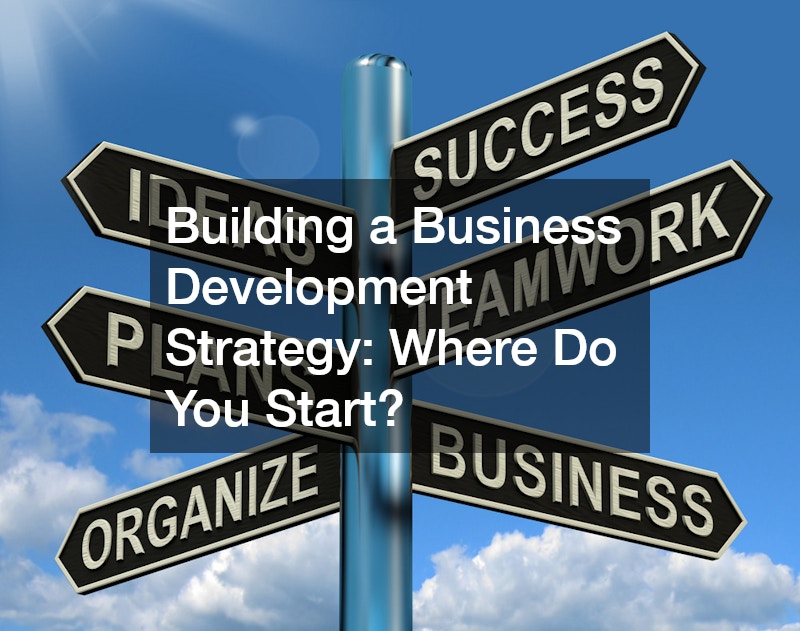In today’s highly competitive business landscape, having a great product or service is simply not enough. For entrepreneurs and business owners, success depends on their ability to continuously find new opportunities, build strategic relationships, and scale their operations effectively. That’s where a solid business development strategy comes in. It’s the engine that drives market expansion, customer acquisition, and long-term sustainability.
Without a defined plan for growth, businesses often find themselves reacting to market changes instead of anticipating them. Worse, they may miss out on key partnerships, funding opportunities, or emerging trends that could fuel their success.
In this article, we’ll explore why every entrepreneur—regardless of size or industry—needs to prioritize business development and how it shapes the trajectory of their venture.
- What Is Business Development and Why Does It Matter?
- How a Business Development Strategy Supports Your Vision
- Key Benefits of a Business Development Strategy
- Building a Business Development Strategy: Where Do You Start?
- Common Mistakes Entrepreneurs Should Avoid
- Final Thoughts: Why a Strategy is Non-Negotiable
What Is Business Development and Why Does It Matter?
Business development is more than just sales—it’s a strategic approach to creating long-term value for a company. It involves identifying new markets, forming partnerships, optimizing operations, and exploring ways to increase profitability. In short, it’s about connecting the dots between opportunities and action.
Why it matters:
- Growth-oriented mindset: Entrepreneurs who focus on business development are better equipped to seize new opportunities.
- Stronger partnerships: It fosters collaborations that can lead to increased reach, credibility, and innovation.
- Market adaptability: A strategy enables businesses to pivot and stay ahead of trends and competitors.
Instead of relying solely on product improvements or short-term tactics, business development creates a sustainable roadmap for future growth.
How a Business Development Strategy Supports Your Vision

A business without direction is like a ship without a rudder. Entrepreneurs need clarity and focus—two outcomes a solid development strategy can deliver. Your business vision outlines where you want to go; your development strategy defines how to get there.
Here’s how a strategy aligns with your goals:
- Targets the right audience: Helps you identify who you’re selling to and where to find them.
- Creates clear objectives: Breaks big goals into manageable steps.
- Measures progress: Defines KPIs and success metrics to track what’s working.
By outlining a path to success, you avoid wasting resources and ensure that every decision aligns with your company’s core mission and values.
Key Benefits of a Business Development Strategy
No matter your business size, a well-structured strategy gives you a competitive edge. Below are some major benefits entrepreneurs enjoy:
1. Improved Customer Acquisition
- Pinpoints high-value customer segments
- Enables personalized outreach and better conversion rates
2. Greater Market Reach
- Identifies new channels and regions for expansion
- Helps develop localized marketing efforts
3. Better Resource Management
- Reduces guesswork and inefficiencies
- Prioritizes high-impact activities
4. Enhanced Brand Reputation
- Builds trust through consistent messaging and valuable partnerships
- Positions the business as a forward-thinking leader in its niche
Incorporating a business growth strategy framework ensures all your efforts are aligned with your long-term vision while maximizing short-term wins.
Building a Business Development Strategy: Where Do You Start?

Creating an effective strategy doesn’t have to be overwhelming. Start with the basics and build from there.
Step-by-step guide:
- Define your goals
– Are you aiming for more leads, partnerships, or market entry? Be specific. - Know your audience
– Conduct market research to understand pain points and trends. - Evaluate your current position
– Perform a SWOT analysis (Strengths, Weaknesses, Opportunities, Threats). - Identify strategic opportunities
– Consider partnerships, new sales channels, or underserved markets. - Create an action plan
– Break down each goal into actionable tasks with timelines. - Monitor and adjust
– Use KPIs and feedback to adapt your strategy as needed.
Remember, business development isn’t a one-off task—it’s an evolving process that grows with your company.
Common Mistakes Entrepreneurs Should Avoid
Even with the best intentions, many business owners fall into traps that can derail their strategies.
Avoid these pitfalls:
- Chasing every opportunity: Not all partnerships or markets are a good fit.
- Lack of focus: Spreading resources too thin reduces impact.
- Ignoring customer feedback: Insights from your audience are invaluable.
- Failure to measure progress: You can’t improve what you don’t track.
Avoiding these common mistakes can save you time, money, and frustration in the long run.
Final Thoughts: Why a Strategy is Non-Negotiable
In an unpredictable economy and ever-evolving market, reactive business management is no longer enough. Entrepreneurs must take a proactive, strategic approach to growth. A solid business development strategy is more than a plan—it’s a mindset. It pushes business owners to think long-term, stay adaptable, and continuously seek out new ways to add value.
Whether you’re launching a startup or expanding an established business, investing time and effort into your development strategy can make the difference between stagnation and success.


